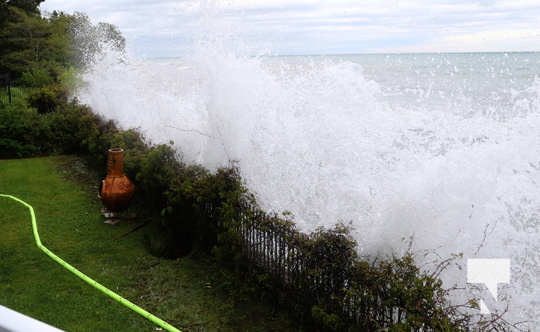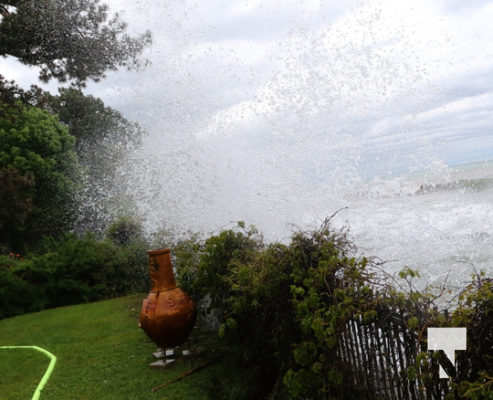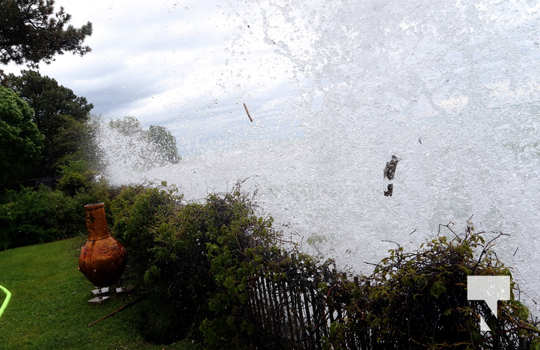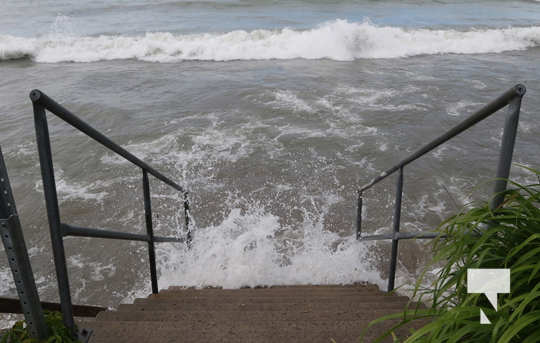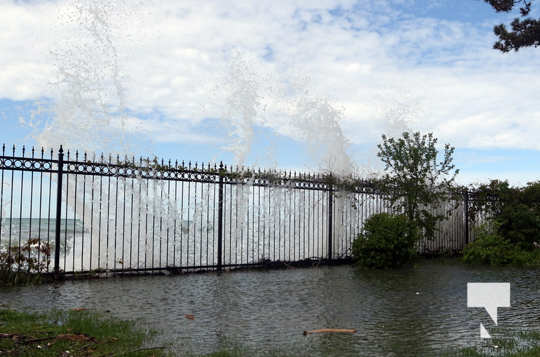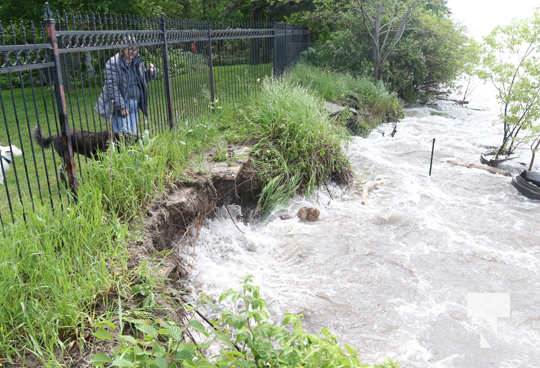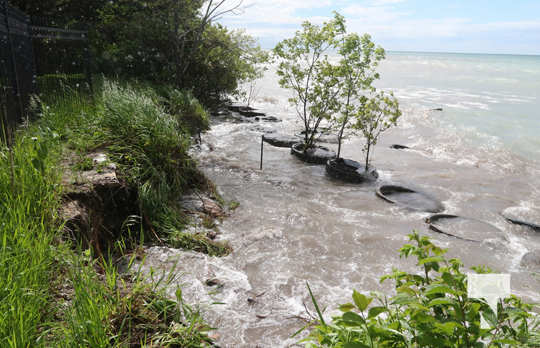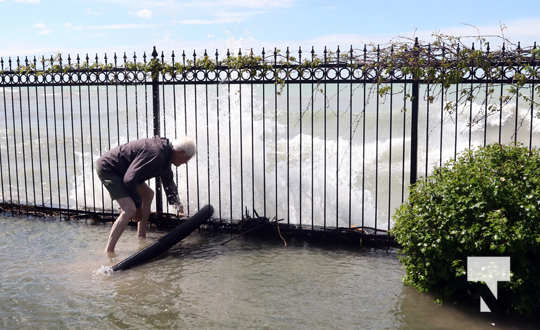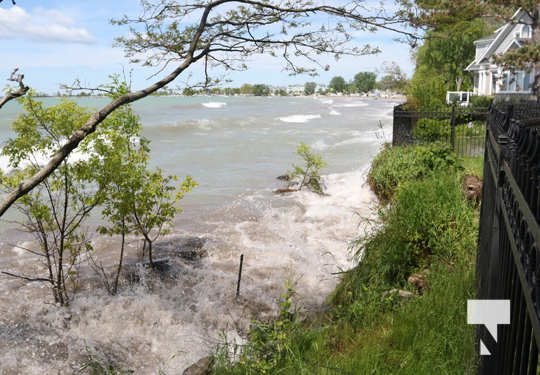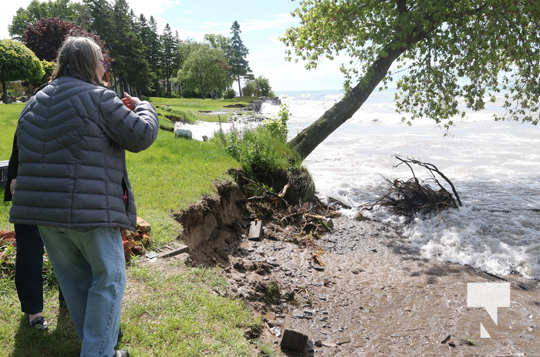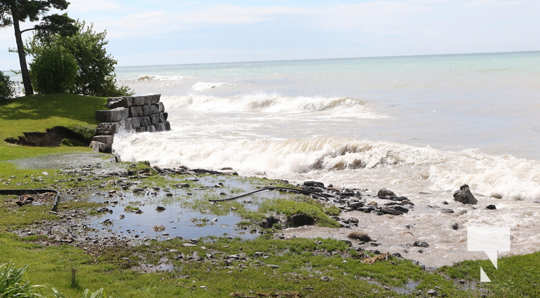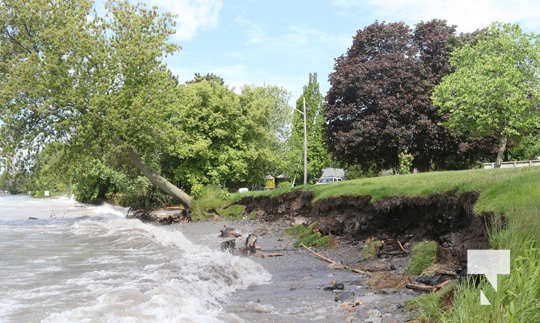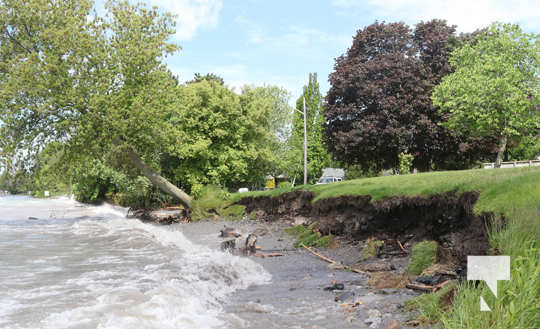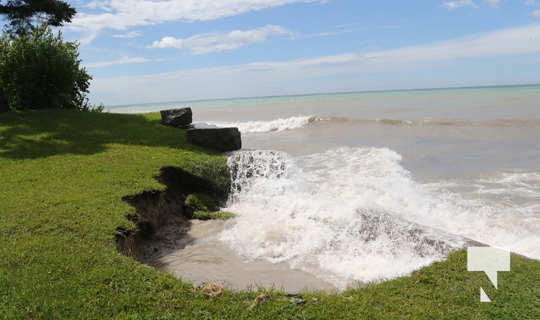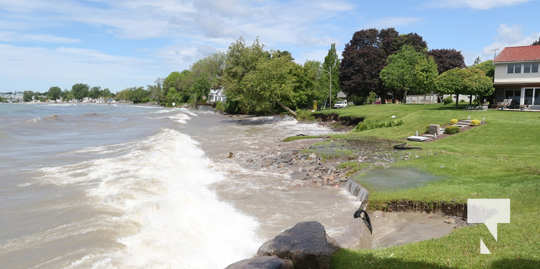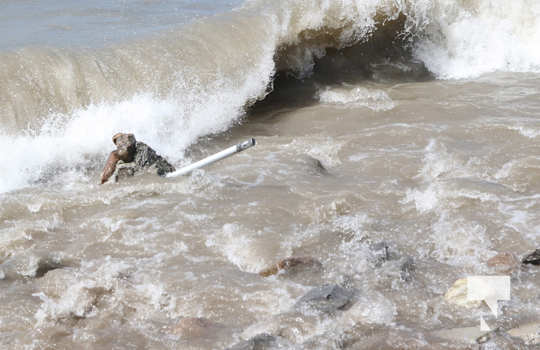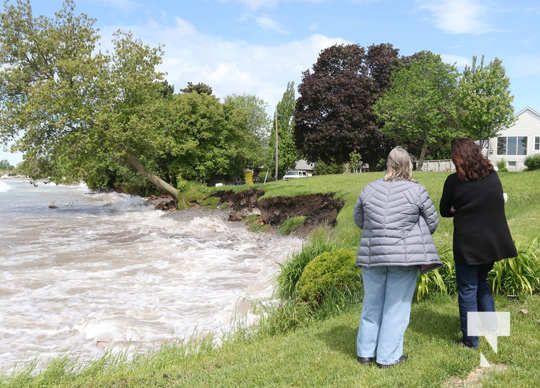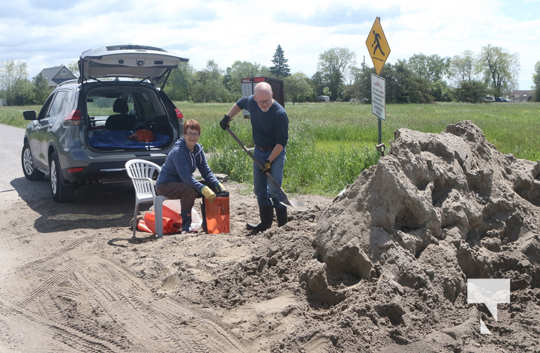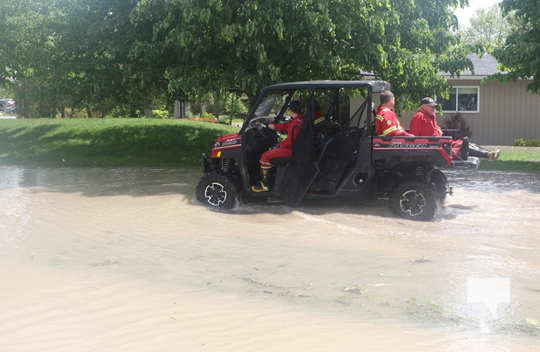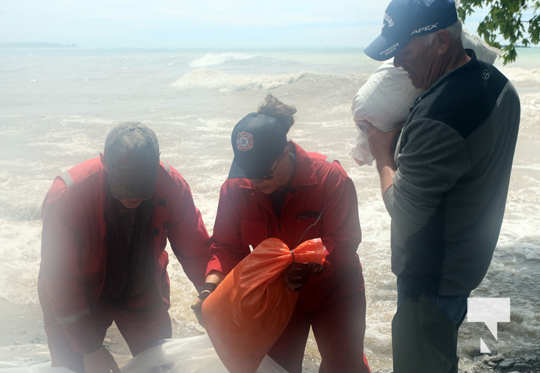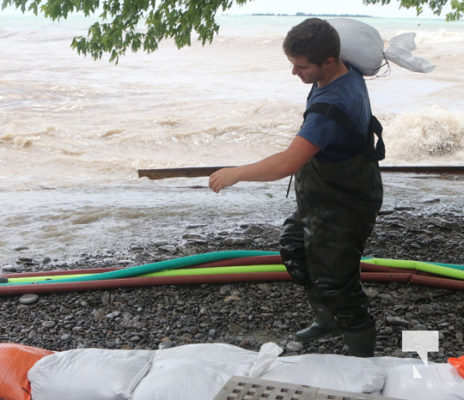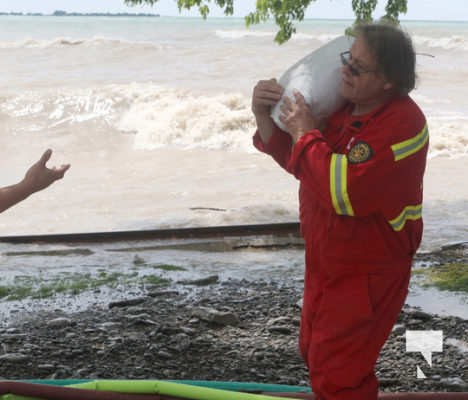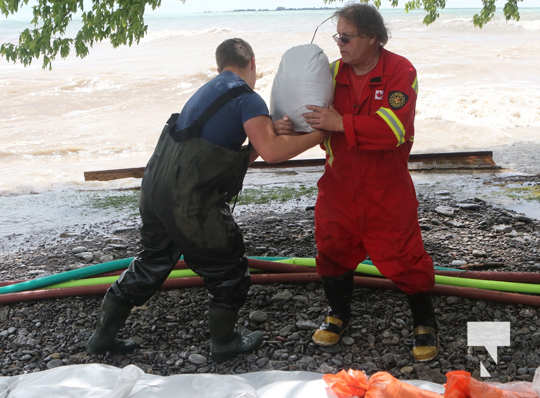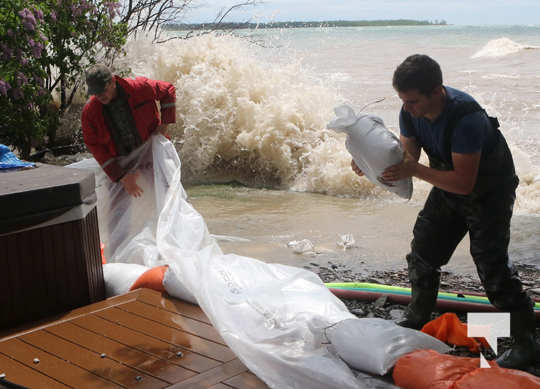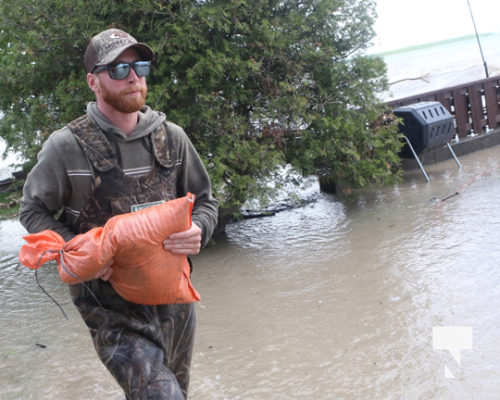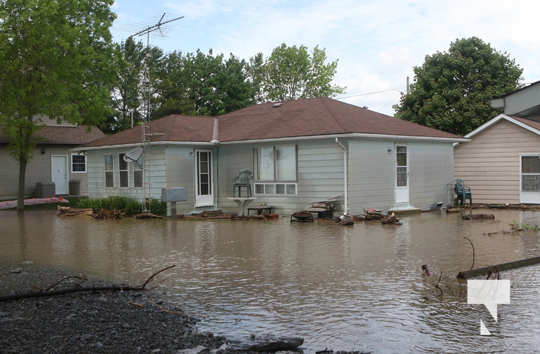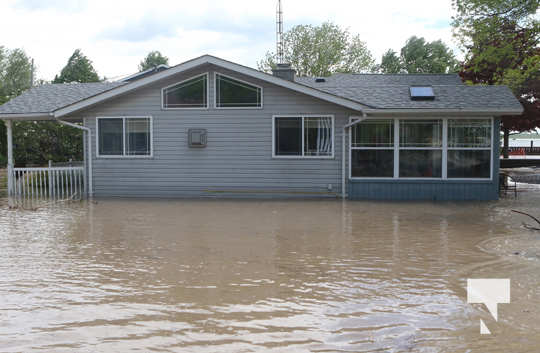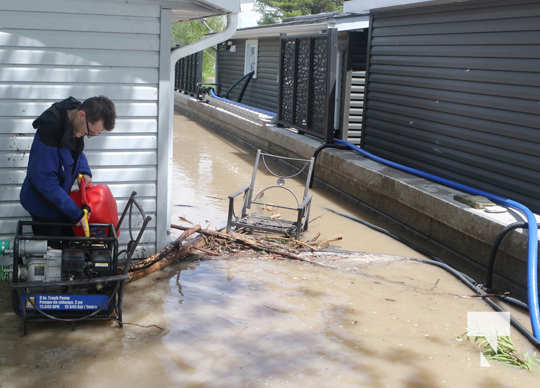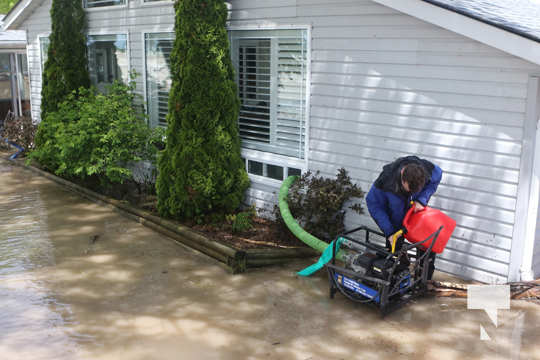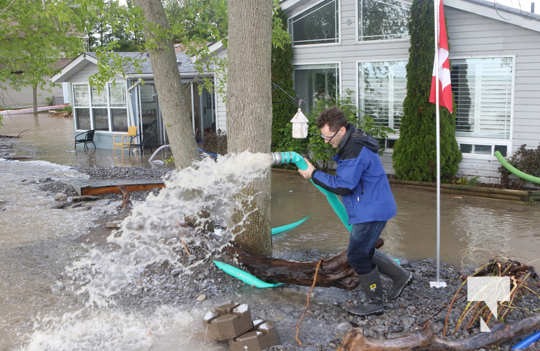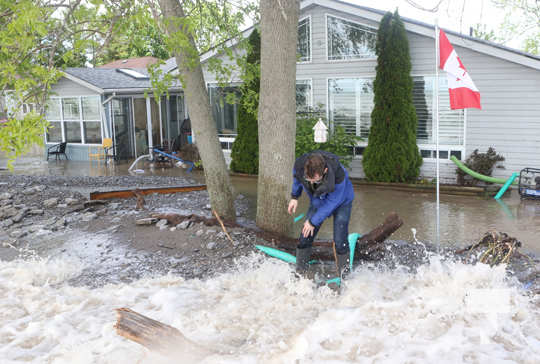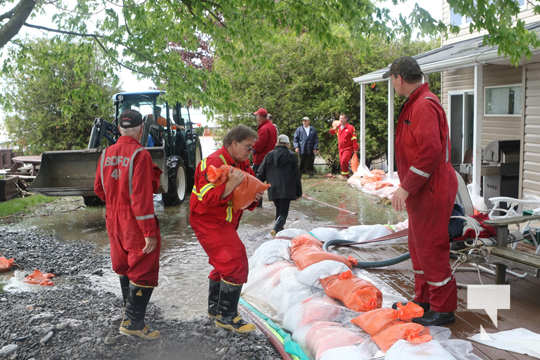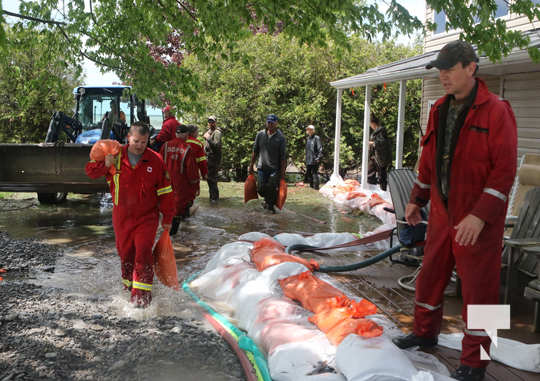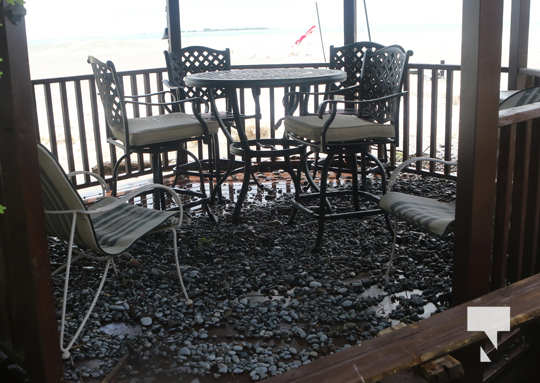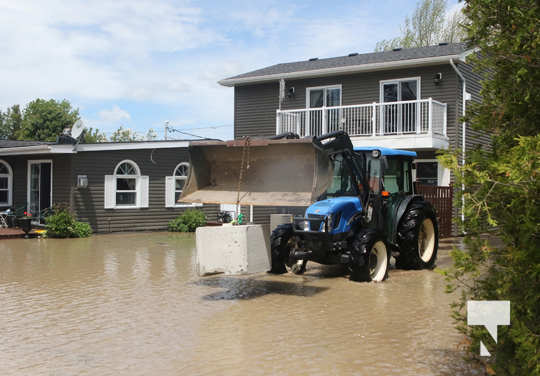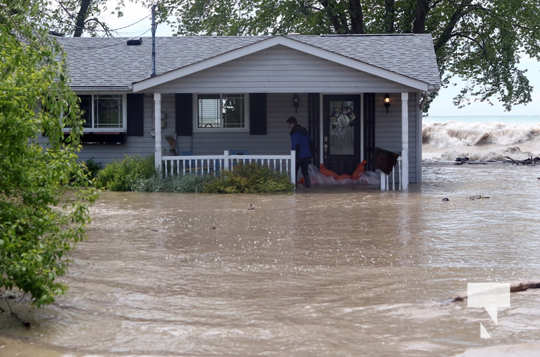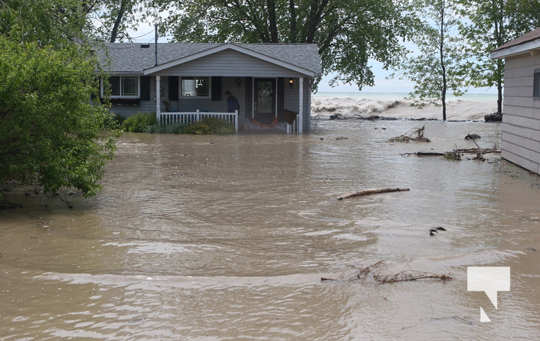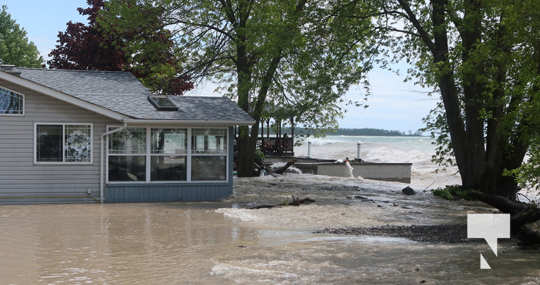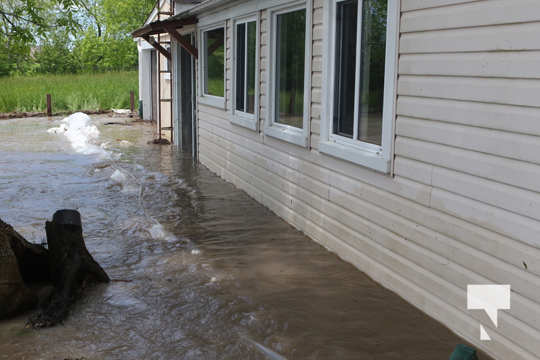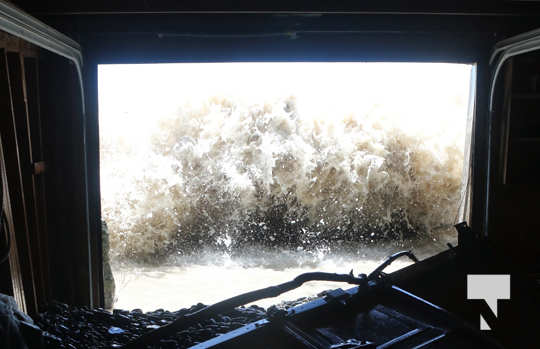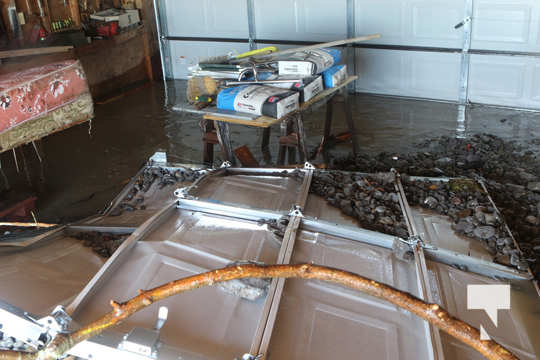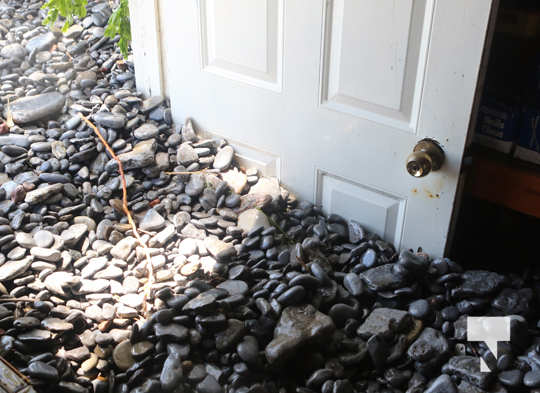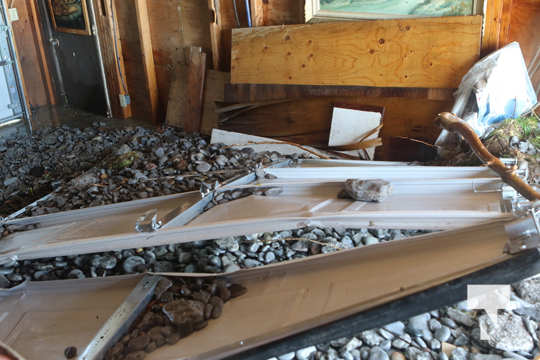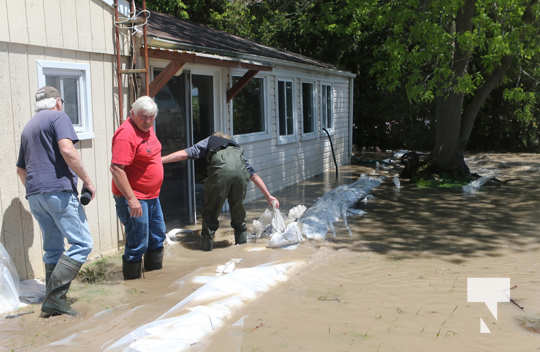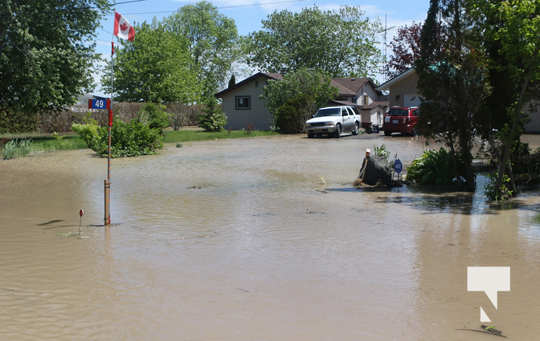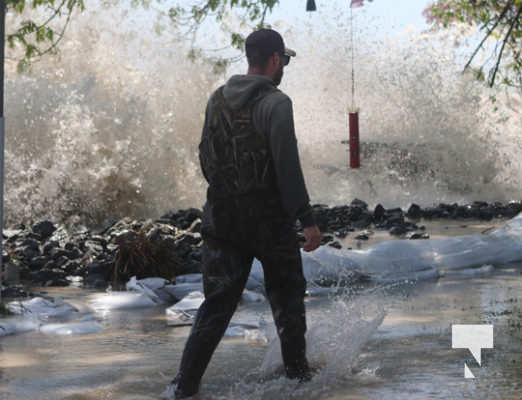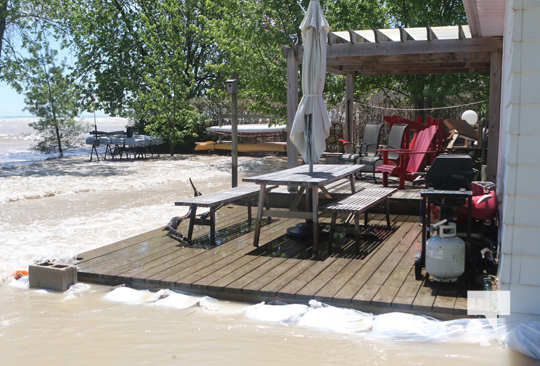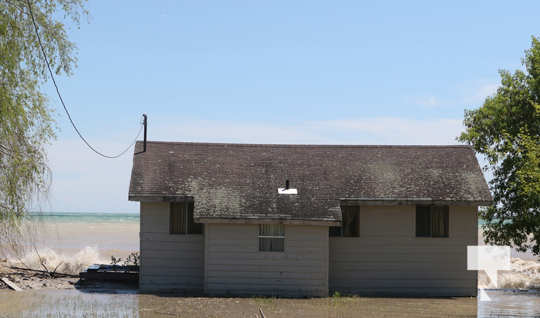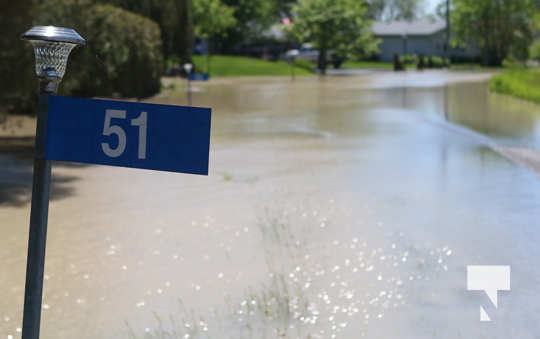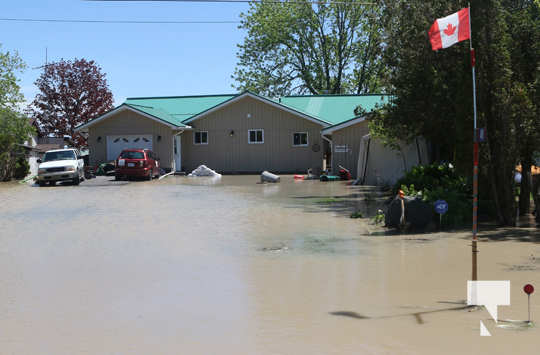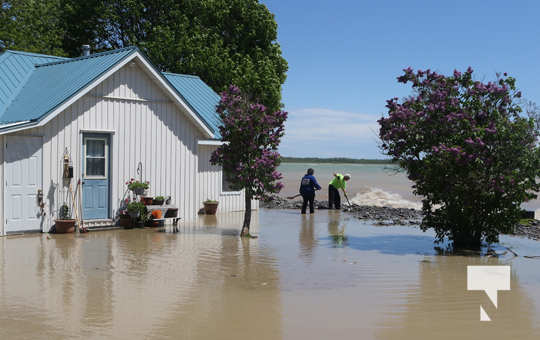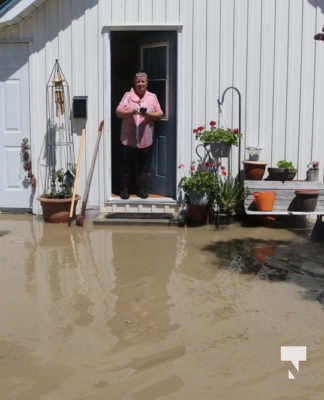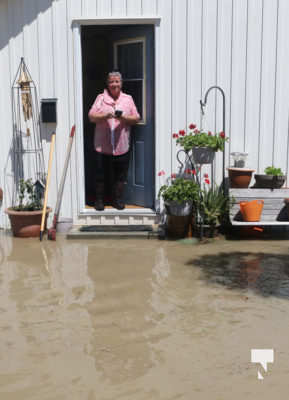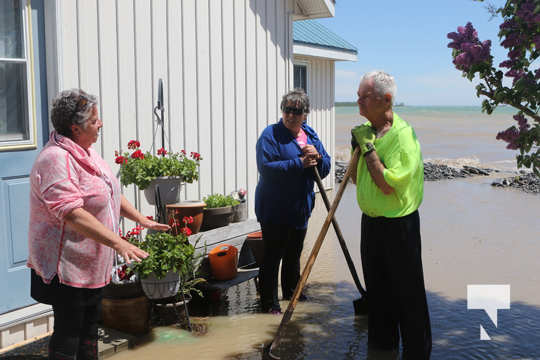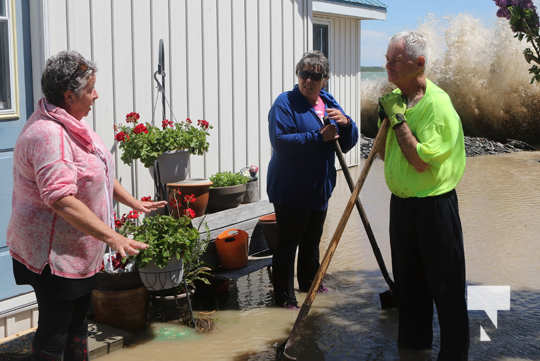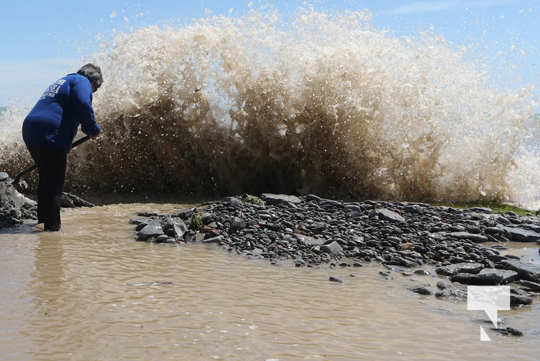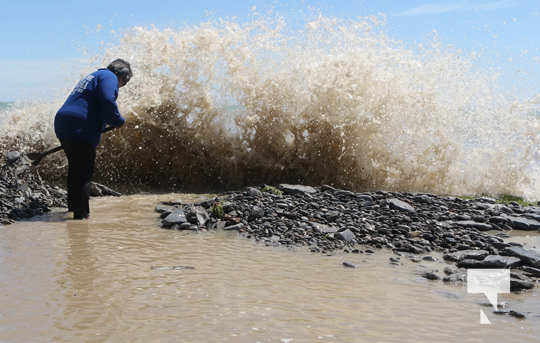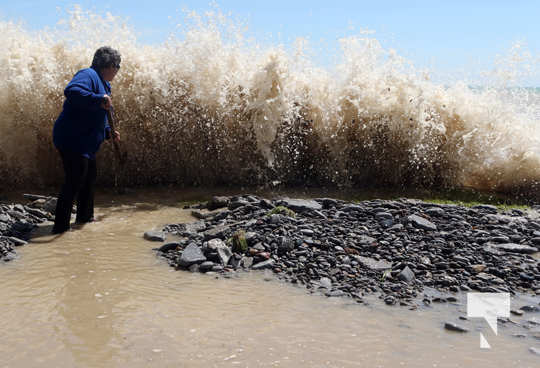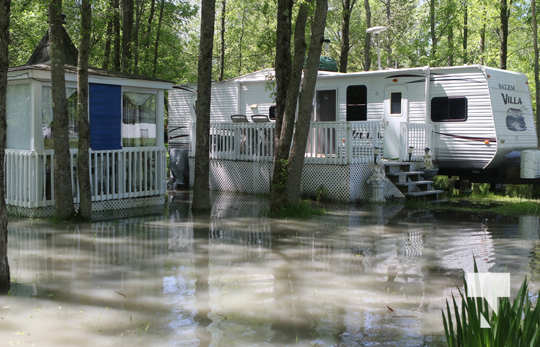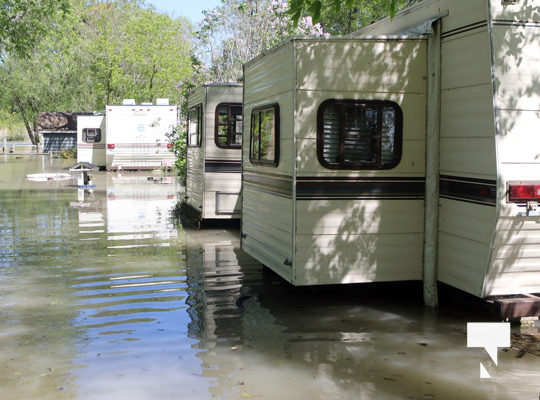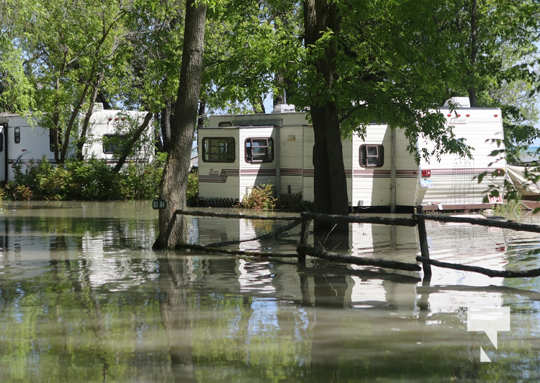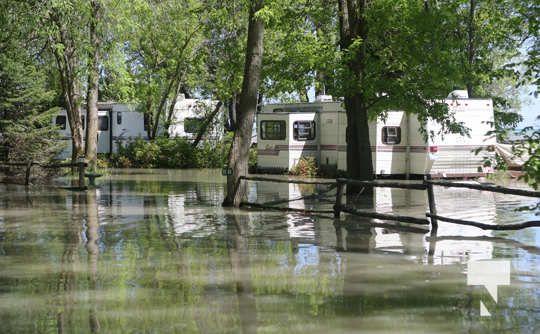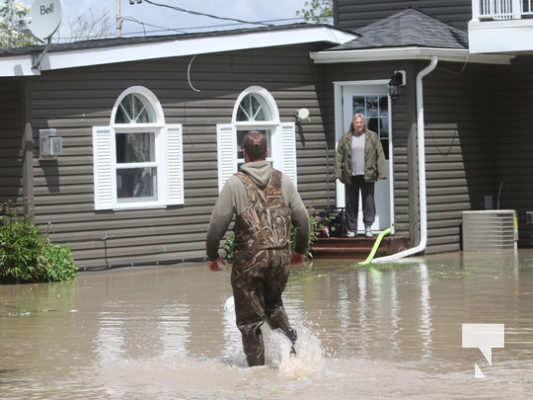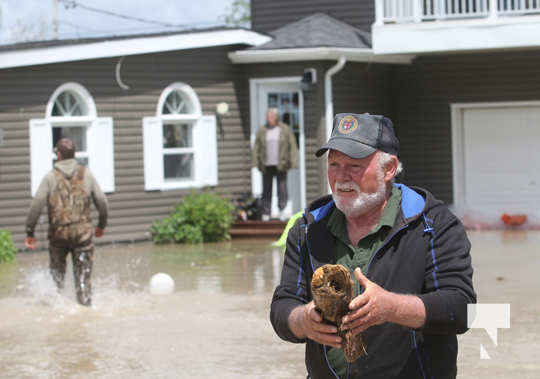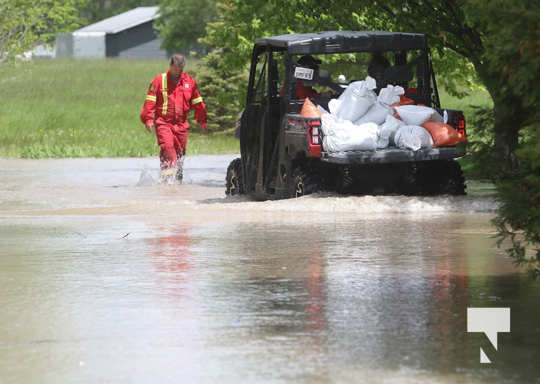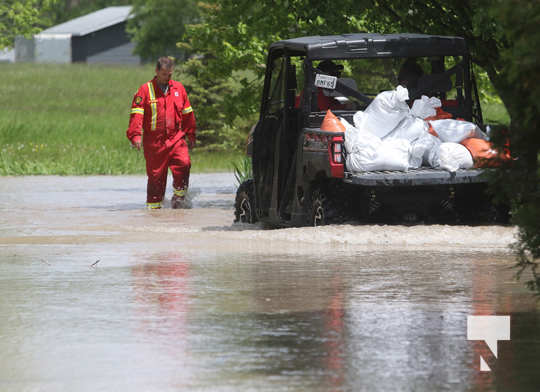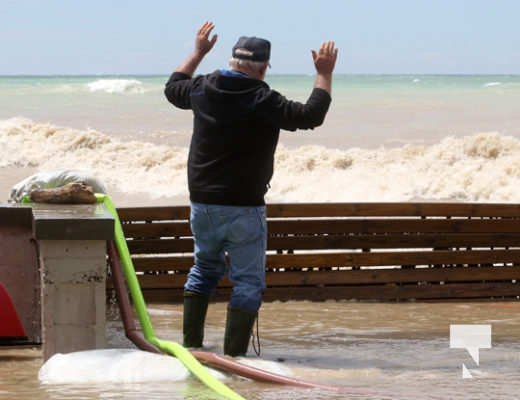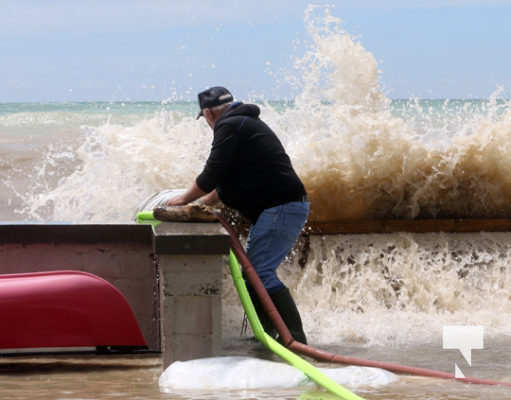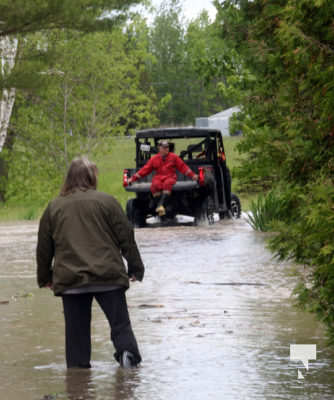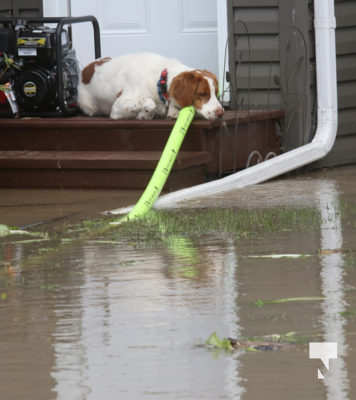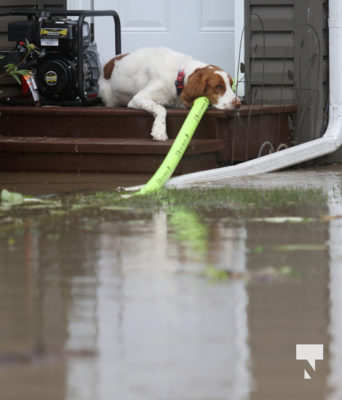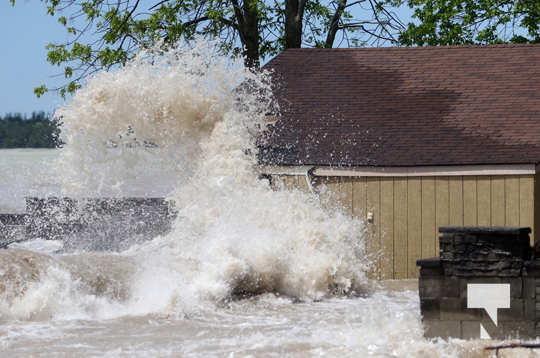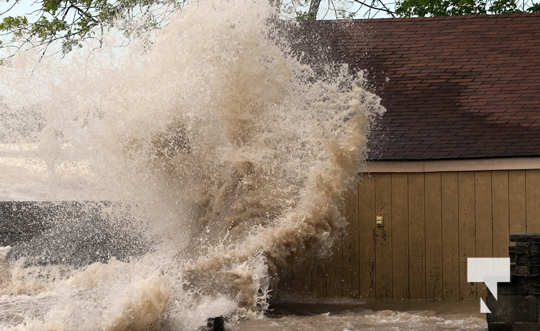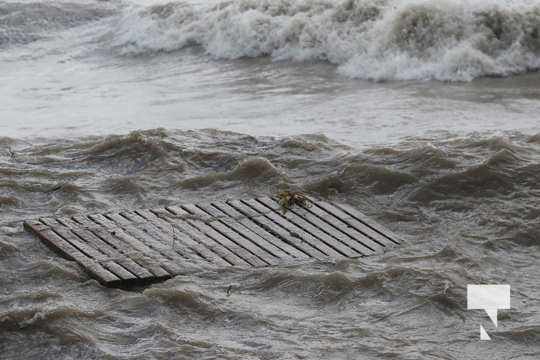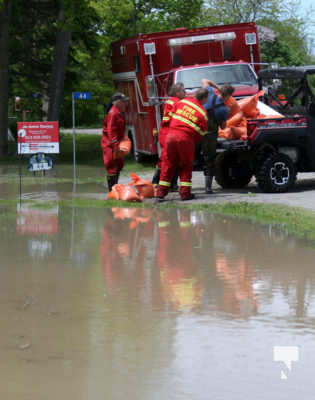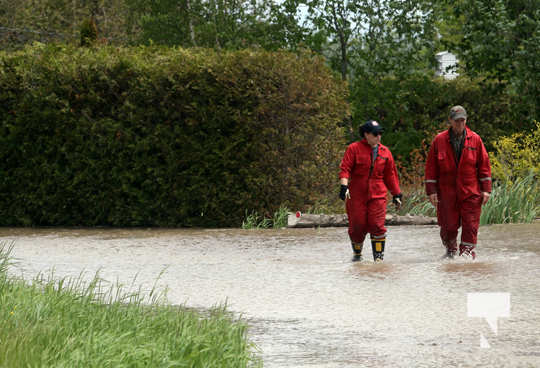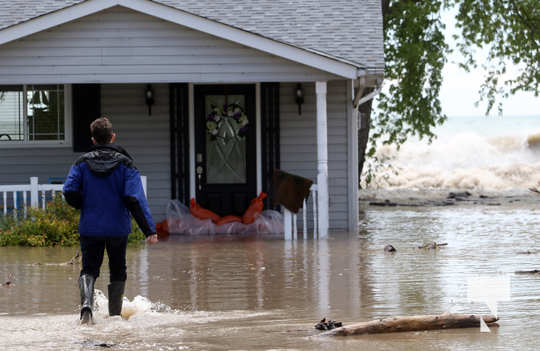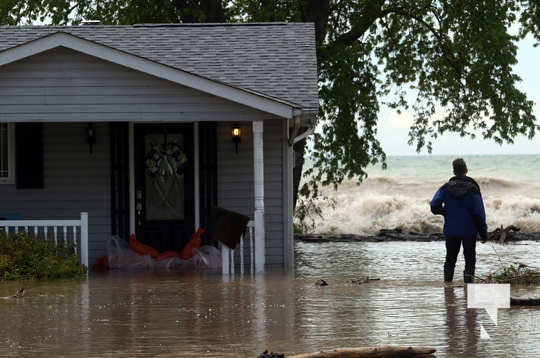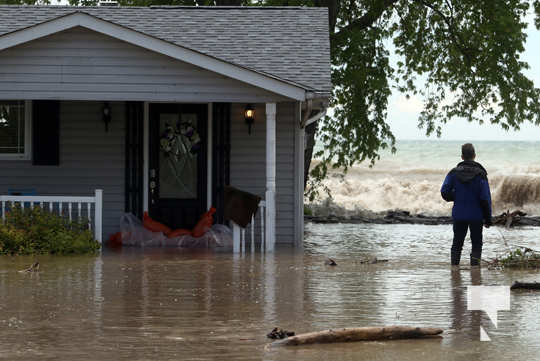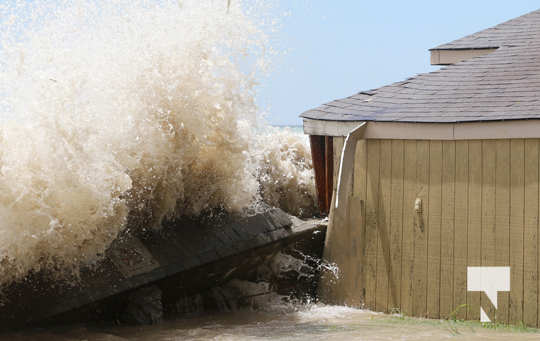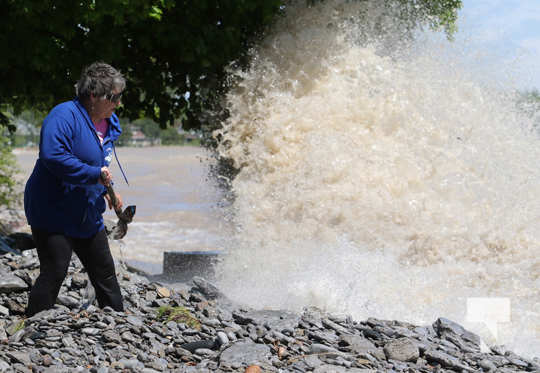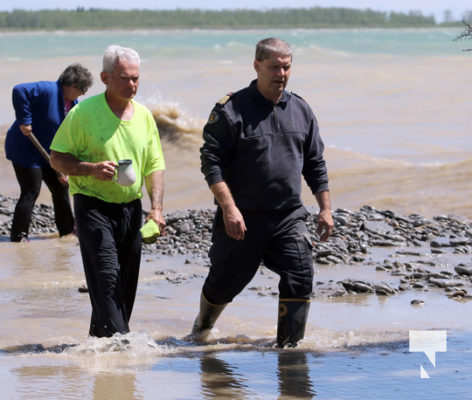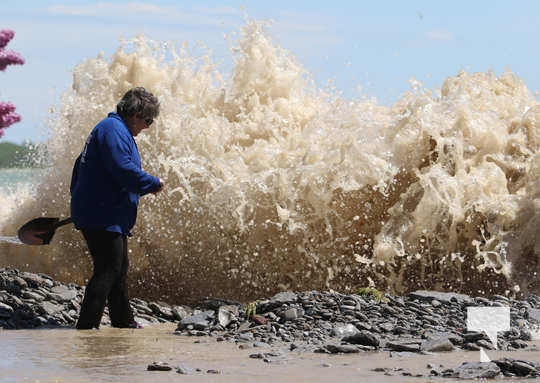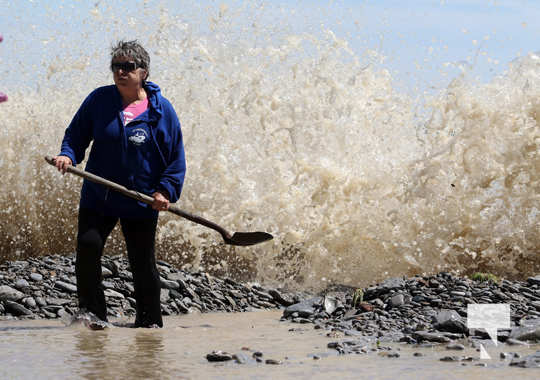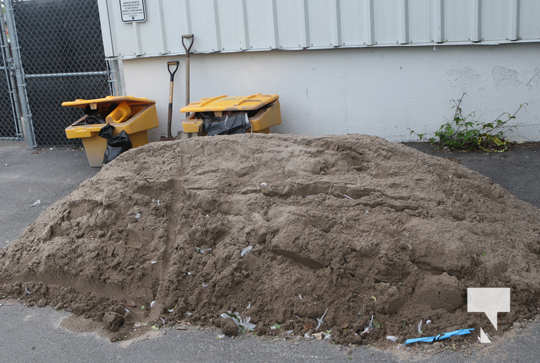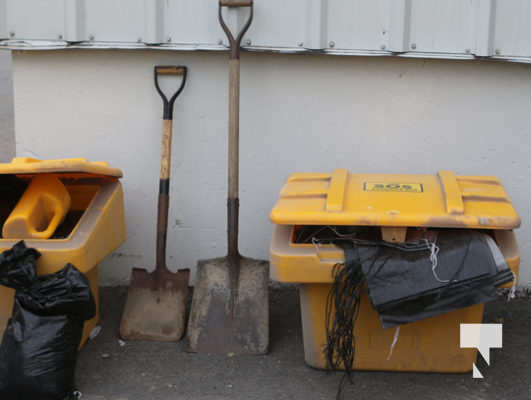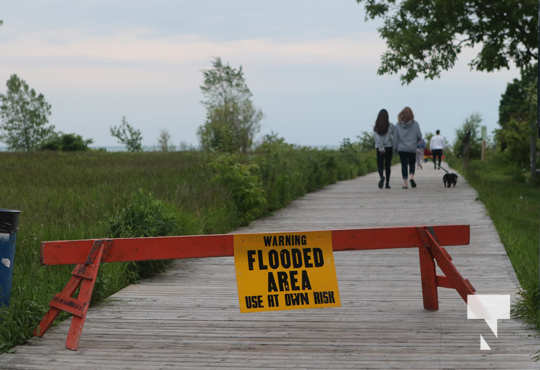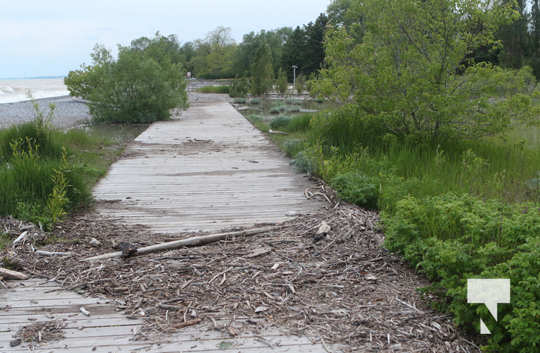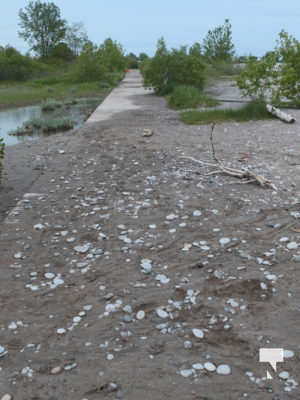A number of videos posted below story
———————
The power of Lake Ontario has hit residents along the lakeshore with a wallop on June 14, 2019.
In Cobourg, numerous residents had to deal with the erosion of shoreline in the area of Water and Lake Streets throughout the day.
A flagpole that was once on shore has succumbed to the high water.
The cause of Friday’s damage was the high water levels, combined with strong winds.
Shorelines that have stood for decades are now eroding.
Sand and sandbags are now available at the Cobourg Public Works Yard on Boggs Road in Northam Industrial Park.
The boardwalk west of Hiberna Street was posted as a flooded area.
Locally, the hardest hit area was in Brighton where several homes were damaged along the lakeshore.
Homes in the Greenway Circle and Popham Lane seem to be the worst.
Residents are doing the best they can to save their homes, but feel helpless with the power of the water.
Neil Watson was one of the home owners battling to save his lakeshore property.
When Today’s Northumberland caught up with him as he was emptying his boots of water, Watson said at the time it was a losing battle.
Water was only a few centimetres from the main part of his house.
All residents agreed it is the worst they’ve ever experienced living along the shoreline.
Climate change may be a part of it, but all people Today’s Northumberland spoke with agreed it was the International Joint Commission’s implementation of what is know as Plan 2014 that was signed on December 8, 2016.
It’s a regulation plan for determining the flows through the Moses-Saunders Dam located on the St. Lawrence River between Cornwall, Ontario and Massena, New York. The updated order and plan replace an outdated system of regulating flows developed in the 1950s.
It was supposed to be a “modern” plan for managing water levels and flows to restore health and diversity of coastal wetlands, perform better under changing climate conditions and continue to protect against extreme high and low water levels.
Unfortunately most people believe Plan 2014 is largely to blame for the extreme conditions along Lake Ontario.
Watson said there was never a problem until they came up with the plan to change the water flow.
With more people voicing their frustrations Watson said he hopes the International Joint Commission listens, “before it’s to late.”
After a brief break, Watson was back at it, trying to maintain pumps that seem to be overwhelmed with wave after wave pounding against his residence.
Doug McKeen has owned property along Popham Lane since 1986 and said it’s extremely sad what is happening.
A wall has been along the lake on his property since he first owned the house, but on Friday it succumbed to the lake.
“I have a feeling it’s poor management of the lake.”
Along with his doing what he can for his property, McKeen was helping his neighbours as best he could.
The water isn’t the only issue, with the power of the waves rocks measuring a 12″ x 12″ are being 25-30 feet.
“Ever since they decided to change the regulations with the lake, since 2017 we have been flooded inside out and backwards,” said resident Michael Hilsheimer.
“This is the worst.”
Hilsheimer stopped by firefighters to see if they had any extra sand bags.
The International Joint Commission assured everyone there would be no flooding even after experts predicted there would be said Hilsheimer.
The U.S. government seems to be taking an active role looking at what can be done, but Hilsheimer said the Canadian government is “whitewashing themselves of it, saying it was an act of God and a bad winter.”
After 2017 he said Plan 2014 should have stopped and this would have been prevented.
“My neighbour has three pumps trying to get the water out of his place, we’ve sandbags our place, his place, I was at my other neighbour’s and her entire porch has been swept away and we’re trying to stop the water from going into her house, but we can’t.”
“There’s nothing you can do – you have to just sit there and watch it.”
Hilsheimer said a retaining wall at his residence will cost upwards of $100,000 to repair.
“And our property is under water at the moment.”
All residents had praise for staff of Brighton.
“Both the firefighters and the municipality are working their asses off to save people’s houses. They’re amazing,” said Hilsheimer.
A number of trailers are also surrounded by water at the Jubalee Beach (Trailer) Park south of Wicklow.
Brighton Mayor Brian Ostrander e-mailed the members of the International Joint Commission on June 12. The e-mail is below:
Dear Chair Beland,
At our meeting of June 3rd our Municipal Council passed the following motion:
Whereas flooding along the lakeshore has adverse social and financial effects to the Municipality of Brighton;
And whereas the Municipality of Brighton has experienced significant flooding events in 2017 and 2019;
And whereas lakes levels are regulated by the International Joint Commission’s (IJC) Plan 2014;
And whereas the Municipality experienced relatively stable lake levels under IJC Plan 1958DD;
NOW THEREFORE BE IT RESOLVED that the Municipality of Brighton receive the correspondence from Steve and Shawnee Spencer;
And further that the Municipality advocate that our Federal partners work with the IJC to develop a new plan that includes flood mitigation;
And further that Council authorizes the Mayor to engage with Government and Non-Government organizations and agencies involved with Lake Ontario flood mitigation.
I understand that your US IJC counterpart intends to raise the issue of suspending Plan 2014 in order to reassess the lake levels and flood mitigation along the Lake Ontario shorelines. Mr. Beland, I respectfully request that you vote in favour of this suspension to allow the IJC to take a hard look at other possible plans that will both return a more naturalized state to the shoreline AND provide flood mitigation to the residents and businesses that call the shore of Lake Ontario home. In Brighton the costs associated with keeping our residents from being flooded out is extraordinary for a small community like ours, and that doesn’t include local rate payers costs associated with insurance, risk and mitigation. Surely, you would agree that a 25 year and/or 50 year flood should only happen every 25 or 50 years and not every other year. We cannot rely on climate change arguments when we know that we can proactively manage lake levels to the benefit of both the natural and built environments along Lake Ontario, while also mitigating flood conditions in the eastern St. Lawrence system.
I would be happy to discuss this issue further at your convenience.
Yours very truly,
Brian Ostrander


